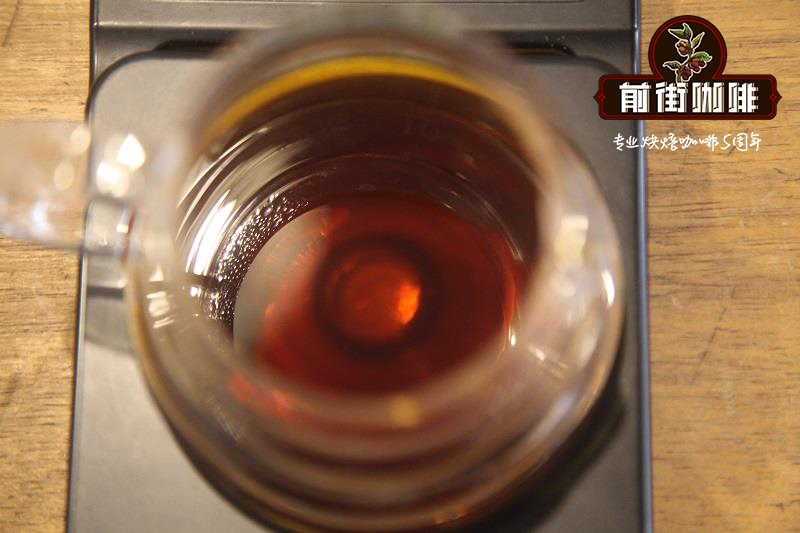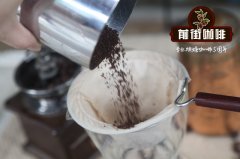What's so special about red standard Rosa coffee beans treated with yeast? How much is a cup of red label Rosa coffee?

Professional coffee knowledge exchange More coffee bean information Please pay attention to coffee workshop (Weixin Official Accounts cafe_style)
The word "fermentation" in life often makes people think of making flour cakes, fried dough sticks, steamed buns, steamed buns, or associated with food rancid items rotten. Fermentation has been used so much in our daily lives that we enjoy a wide variety of delicious fermented foods, Huizhou tofu, French wine, home pickled radish, northeast pickled pork, canned Swedish herring, which are known to be fermented.
But in English, Fermentation is derived from the Latin fervere, meaning "churning," which describes the mild foaming or violent boiling of yeast when it acts on grape juice or wort.
beer fermentation
Beer is unquestionably fermented, and alcohol is best known for its fermentation reaction formula, which is "sugar acting through yeast to produce alcohol and carbon dioxide." However, in fact, beer fermentation is far more than just producing alcohol. All kinds of flavors that people like and dislike need to be controlled accurately by artificial fermentation environment and state in order to produce more good flavors and less bad flavors.
Whether it is making noodles or making wine, it is a process that relies on the life activities of microorganisms under aerobic or anaerobic conditions to prepare microbial cells themselves, or their direct metabolites or secondary metabolites.
A simplified schematic diagram of yeast metabolic cycle
Interestingly, yeast is still hungry late in the beer fermentation process, when fermentable sugars may have been exhausted and various fermentation metabolites by-products become food for the yeast.
Yeast working like a beast in beer
Instead, the winemakers controlled the bad flavors to be eaten more and the good flavors to be eaten less. From addition to subtraction. This is also the main reason why red wine tastes better after aging, because the bad taste is less and less, and the wine quality becomes clearer and cleaner.
photo by Sasa
Coffee fermentation
Different biological changes take place during the natural fermentation of coffee. Yeast produces enzymes and lactic acid bacteria break down the sugar in coffee pectin. The lipids, proteins and acids in sugar are degraded and converted into alcohol acidic acids. Coffee smell, color, pH changes, coffee pectin composition will also change.
At the heart of the process is fermentation.
In the fermentation process, different substances (coffee peel, coffee pulp, coffee pectin, flora type, bacterial number distribution), different environments (water and no water, aerobic and anaerobic environment, PH value environment, etc.), different drying methods and processes (container materials, natural sunlight, drying equipment, turning times, etc.), create different post-processing flavors and tastes.
The basic process of coffee is coffee growing--> green bean processing--> cooked bean roasting--> coffee brewing. However, in this link of raw bean treatment, all kinds of treatment methods have nothing to do with fermentation.
We see dry fermentation and wet fermentation more often, and more recently, how are the 'anaerobic treatment' and 'yeast treatment' carried out?
yeast treatment
In any case, adding yeast to the fermentation process is a bold move.
In Gothenburg, Sweden, Camille Delebeque, a French doctor of biology, gave a talk at Re;co in 1999. His company changed the flavor of coffee by controlling the microorganisms in the fermentation process, so that coffee became less bitter, astringent and sometimes not sour. He calls it Cultured Coffee, or Microbial Coffee.
Their approach is to select specific yeasts or microorganisms and perform so-called secondary fermentation to enhance good flavors or reduce bad flavors. Even though he doesn't reveal what microbes he uses, how his secondary fermentation actually takes place, where the coffee comes from, what kind of beans it is, etc., his product is not cheap at all, costing $29 for 5 ounces (148g).
El Salvador's best-known coffee farmer, Aida Batlle, teamed up with Equator, an American bean roaster, to test the effect of yeast on flavor in a fermentation tank for bourbon grown on El Salvador's farm Buenos Aires, and compared it to a traditional washing treatment without yeast. In 2017, they experimented with two different yeasts and found that different yeasts got different results. One of them increases the sweetness, balance and consistency of the coffee, while the other increases brightness and fruit tonality. Yeast treatment adds flavors that are not readily available with traditional washing: sugar cane, lemon, nutmeg, sage.
According to the official disclosure, this Panama Emerald Estate rose summer auction yeast treatment series (ES-Y): a total of four LOT batches, nine boxes of beans, using a new treatment method "yeast fermentation" and unique flavor of rose summer coffee beans.
One of the highlights of this year's auction was the addition of a "yeast batch": a special yeast is added to the fermentation tank for 48 hours, washed, and then dried on the sun bed for 4 days. Unique yeast processing batches. Yeast is added to the post-processing process to make the fermentation process more rapid and thorough, and to produce special flavors.
Yeast A has a distinct red wine flavor compared to yeast B, while yeast A has a more refined red wine flavor, which can present the characteristics of rose summer more beautifully, so Y-1 is more expensive.
Lot ES-Y-1: Processing method: Add A yeast to ferment for 48 hours, wash it, and then dry it on the shelf for 4 days. Bidding price: 340 US dollars/lb!
Lot ES-Y-2: Processing method: add B yeast to ferment for 48 hours, wash it, and then dry it on the shelf for 4 days. The bid price is 111 US dollars/pound!
According to Rachel Peterson, owner of the estate, the "yeast fermentation" is an attempt by Emerald Estate to see how well the yeast-inoculated rosewood beans perform.
Process: Fully ripe bright red fruits are picked manually, screened out of size and washed, soaked in clean water, fermented for about 48 hours, added yeast, and then dried in the sun. Tiled in the sun bed about 1~2 layers of thickness, after 4 days of sunlight exposure, average temperature: daily: 16 degrees- 23 degrees, every night: 10 degrees- 15 degrees, complete a distinct unique flavor!
After testing our yeast-treated red label, we were delighted to find that this method enhanced all aspects of rose coffee performance (including aroma, body, acidity and aftertaste) and was very different from sun rose coffee. Overall, it is closer to anaerobic fermentation, and this process is very good in aroma and flavor, it grinds away the soft and excessive acidity of washed coffee, brings a balanced and rich layer, and adds a red-wine-like flavor.
Coffee Bean Brand Recommendation
Front Street Coffee Roasts Panama Emerald Estate Red Label Rosewood beans with full guarantees of brand and quality. More importantly, the cost performance is extremely high, a pack of 100 grams, the price is only 350 yuan. According to the calculation of 15 grams of powder per cup of coffee, a pack can make 6 cups of coffee, each cup only costs about 60 yuan, compared with the coffee shop sells hundreds of dollars a cup price can be regarded as conscience recommendation.
Important Notice :
前街咖啡 FrontStreet Coffee has moved to new addredd:
FrontStreet Coffee Address: 315,Donghua East Road,GuangZhou
Tel:020 38364473
- Prev

What coffee beans are used for hand-brewing coffee at the Veolia processing farm in Kenya? coffee origin.
Professional coffee knowledge exchange more coffee bean information please follow the coffee workshop (Wechat official account cafe_style) Qianjie Coffee is committed to promoting boutique coffee, to provide coffee lovers and practitioners with more boutique coffee information country: Kenya: Embu County processing Plant: Veolia processing Plant varieties: SL34 treatment: Kenyan water washing hand-made single products
- Next

"Red label""Green label""Blue label" Which kind of rose summer coffee is best to drink? How much is coffee beans?
Professional coffee knowledge exchange More coffee bean information Please pay attention to Coffee Workshop (Weixin Official Accounts cafe_style), which was once rated as one of the top ten expensive coffees in the world by Forbes. Geisha sounds like a Japanese geisha, so it has this nickname. The rise of the Rose Summer coffee bean is undoubtedly the most famous legend in the fine coffee world since the 21st century. Geisha coffee beans,
Related
- Detailed explanation of Jadeite planting Land in Panamanian Jadeite Manor introduction to the grading system of Jadeite competitive bidding, Red bid, Green bid and Rose Summer
- Story of Coffee planting in Brenka region of Costa Rica Stonehenge Manor anaerobic heavy honey treatment of flavor mouth
- What's on the barrel of Blue Mountain Coffee beans?
- Can American coffee also pull flowers? How to use hot American style to pull out a good-looking pattern?
- Can you make a cold extract with coffee beans? What is the right proportion for cold-extracted coffee formula?
- Indonesian PWN Gold Mandrine Coffee Origin Features Flavor How to Chong? Mandolin coffee is American.
- A brief introduction to the flavor characteristics of Brazilian yellow bourbon coffee beans
- What is the effect of different water quality on the flavor of cold-extracted coffee? What kind of water is best for brewing coffee?
- Why do you think of Rose Summer whenever you mention Panamanian coffee?
- Introduction to the characteristics of authentic blue mountain coffee bean producing areas? What is the CIB Coffee Authority in Jamaica?

